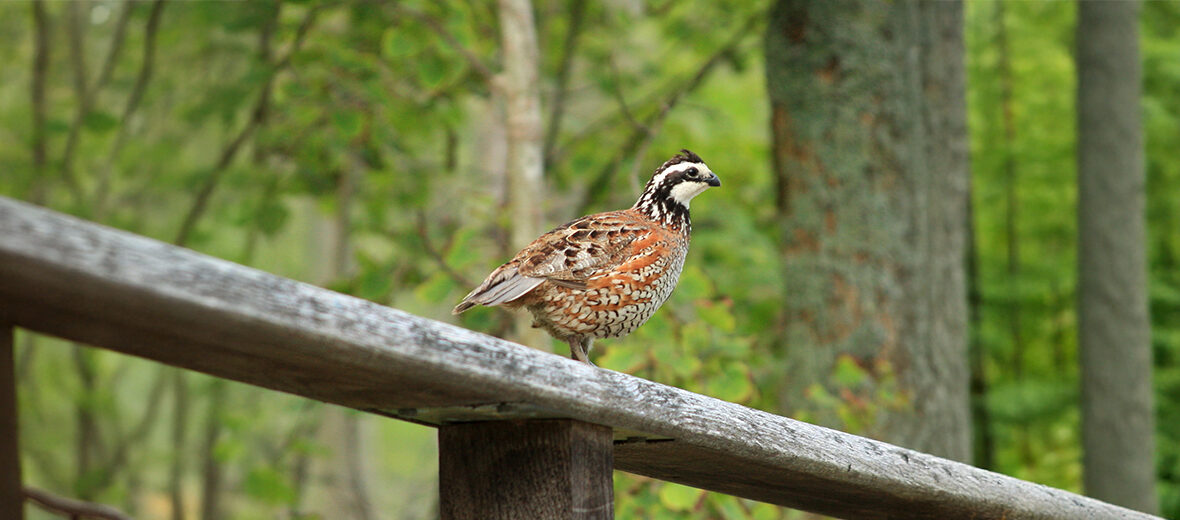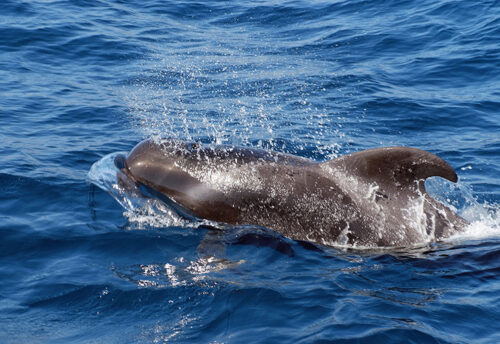
The northern bobwhite, aka Virginia quail or bobwhite quail, can be found in Canada, Cuba, Guatemala, Mexico, and the United States. They have also been introduced to the Caribbean, Europe, and Asia. They are a member of the group of species known as New World (from the Americas) quail. Due to the threats of habitat loss and destruction at the hands of residential and commercial development, farming, ranching, logging, fires, and fire suppression; hunting; and trapping, these quails are listed as Near Threatened by the IUCN. Their numbers are also decreasing.
First the Stats…
Scientific name: Colinus virginianus
Weight: Up to 6.1 ounces
Length: Up to 11 inches
Wingspan: Up to 15 inches
Lifespan: Up to 5 years
Now on to the Facts!
1.) The name “bobwhite” is onomatopoeic (relating to), and is derived from their telltale whistling call that sounds like they are saying, “Bob-white”.
2.) There were an estimated 5,800,000 wild individuals as of 2021.
3.) Habitat degradation has hurt the northern bobwhite populations in eastern North America causing a decline of roughly 85% from 1966 – 2014.
4.) There are 20 subspecies of bobwhite. Most of those are extensively hunted as game birds.
5.) Swedish naturalist and historian Carl Linnaeus officially described these quails in the tenth edition of his Systema Naturae under the binomial name Tetrao virginianus in 1758.
But wait, there’s more on the northern bobwhite!
6.) As is the case with all game birds, they are elusive and shy. They rely on camouflage as a defense. If approached too closely though they will fly away.
7.) At 1 time they were considered to be monogamous (mate for life), but with the introduction of radio telemetry, the sexual behavior of bobwhites has been best described as ambisexual polygamy (both males and females mate with multiple partners).
Did you know…?
In 2023, the masked bobwhite subspecies was featured on a United States Postal Service Forever stamp as part of the Endangered Species set, based on a photograph from Joel Sartore’s Photo Ark.
8.) Females lay up to 28 eggs in up to 4 broods. The eggs hatch in up to 23 days.
9.) Chicks only have up to a 28% chance of survival, due to predation.
10.) It is very rare for bobwhites to hatch more than 2 successful nests within 1 nesting season.
But wait, there’s still more on the northern bobwhite!
11.) Fledging occurs in just 2 weeks as they are born precocial (self sufficient) and able to walk, fly, and feed themselves in just 2 days.
12.) Seeds, partridge peas, wild berries, cultivated grains, snails, ticks, grasshoppers, beetles, spiders, crickets, and leafhoppers make up their diet.
13.) These birds are diurnal (active during the day).
14.) Predators include raccoons, opossums, skunks, foxes, coyotes, bobcats, armadillos, hawks, owls, northern harriers, snakes, and feral hogs.
Now a Short Northern Bobwhite Video!
Be sure to share & comment below! Also, check out the Critter Science YouTube channel. Videos added regularly!
Want to suggest a critter for me to write about? Let me know here.
Some source material acquired from: Wikipedia & IUCN
Photo credit: Tim




